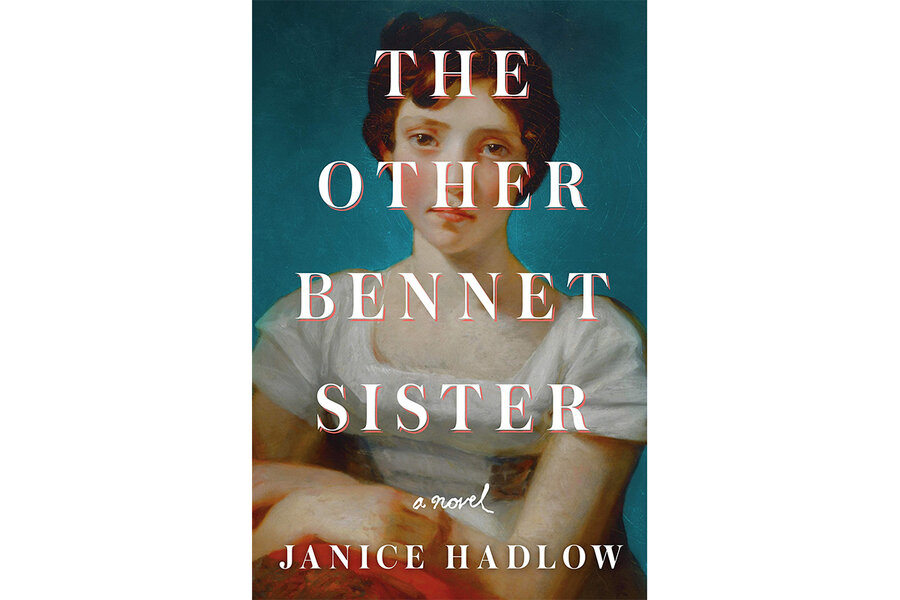‘The Other Bennet Sister’ focuses attention on bookish Mary
Loading...
Literary classics, books like Jane Austen’s “Pride and Prejudice,” are woven into our collective lexicon. British author Janice Hadlow capitalizes on this awareness with her latest novel “The Other Bennet Sister.” Beginning with Austen’s familiar story, Hadlow gives us a book that is satisfyingly evocative of the earlier novel and yet strikingly contemporary.
Hadlow focuses on Mary, the awkward middle sister from the Austen novel, the one whom most everyone overlooks. Her book is not a sequel nor is it really an interpretation. Rather, Hadlow retells the story from the vantage point of a figure given short shrift in the original, someone whose strengths were beyond what even Jane Austen could have imagined during her time. Faithful to the 19th century book, this is most definitely a 21st century tale.
Hadlow’s novel opens with a storyline that patterns Austen’s original. The five unmarried Bennet sisters are living with their parents at Longbourn, a small country estate. Since the estate is entailed, when their father dies, the property and the house will belong to a male cousin. The sisters must find husbands. Readers will recall Jane, Elizabeth, Mary, Kitty, and Lydia, cast in a light similar to Austen’s portrayal, each reflecting the social mores of their day. Mr. Bingley and Mr. Darcy also make their entrances, as does the sisters’ friend Charlotte Lucas, to name a few of the recurring characters.
But this time we see everything through Mary’s eyes. Hadlow paints her as a far more sympathetic and understandable character. She reveals the emotional pain Mary experiences both from her sisters’ indifference to her as well as from their mother’s obvious disappointment in her middle daughter.
In response, Mary withdraws to their father’s library. But this time, rather than the dull and pontificating sister of Austen’s work, Hadlow’s Mary perseveres. As the story continues beyond the scope of the classic work, we see her emerge as a young woman who is complex, emotional but measured, and in charge of her own destiny. Because, just maybe, developing one's intellect will do that.
As her book diverges from the original, Hadlow grafts a contemporary coming-of-age story onto a literary masterpiece and she does it in a manner that is not only faithful to the original, but also respectful. She builds upon what Austen had achieved – writing boldly and honestly about women’s lives.
It is easy to forget just how bold Jane Austen’s work was for its time. Yes, she places the charming Elizabeth at the center of her story, but she wrote about young women who are self-aware, who choose marriage based on love, not status, and make choices despite living in a deeply paternalistic society. Austen examined personal character and the importance of choosing one’s company wisely, illustrating the influence friends might have.
Hadlow captures Austen’s voice as she unwinds a story that reaches several years beyond the original story. She extends even further the possibilities available to a woman who thinks for herself.
She recognizes intellect and the importance of cultivating one’s gifts. When Mary chooses a husband – and she does choose, she does not settle – her decision is based upon understanding and valuing herself, along with an appreciation of her husband's qualities. Her match does not offer wealth or land or a title. But he, in return, appreciates and complements her intellect.
“The Other Bennet Sister” stands on its own as a literary work. One needn’t be familiar with Austen’s novels to appreciate the book, but it helps. How else would a reader enjoy such lines as when Mary realizes she must not be influenced by her emotions? “Sense and not sensibility must be her guide.”
And at 463 pages, it is not a book to race through over a weekend. It meanders at a pace reminiscent of the earlier era, giving readers license to settle in and get lost in a story that might be about characters from another century but, like all enduring classics, offers truths just as relevant today.








